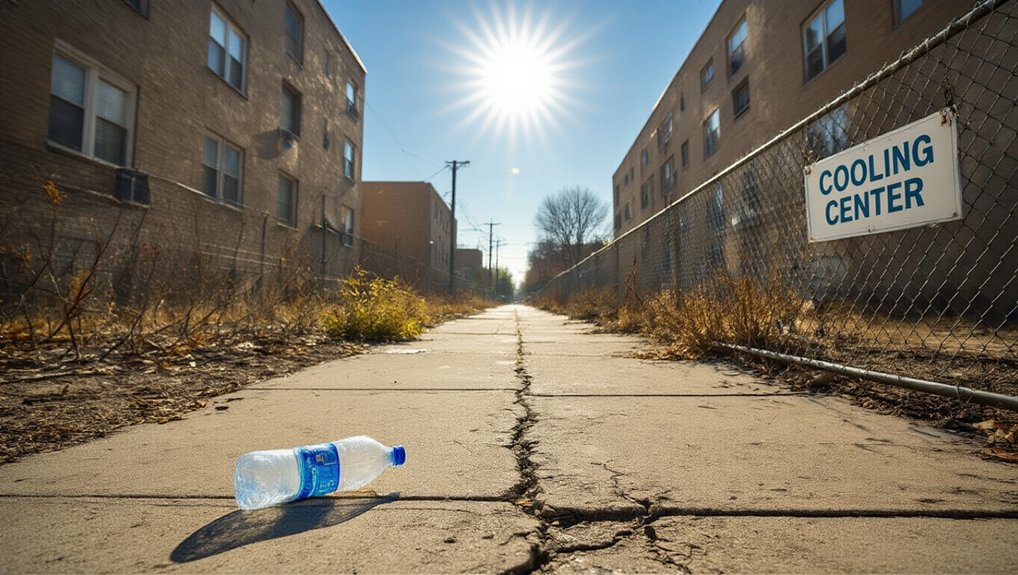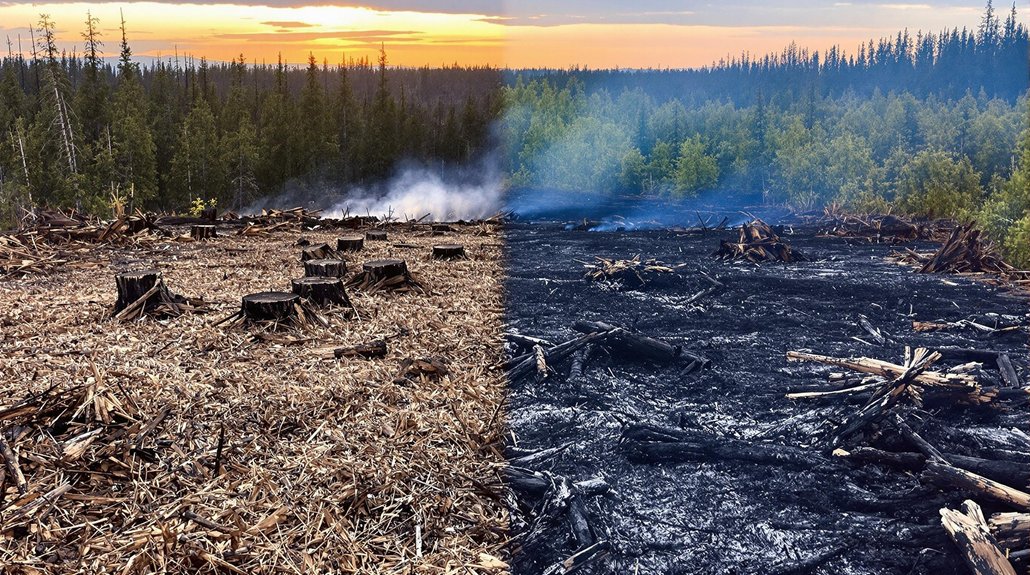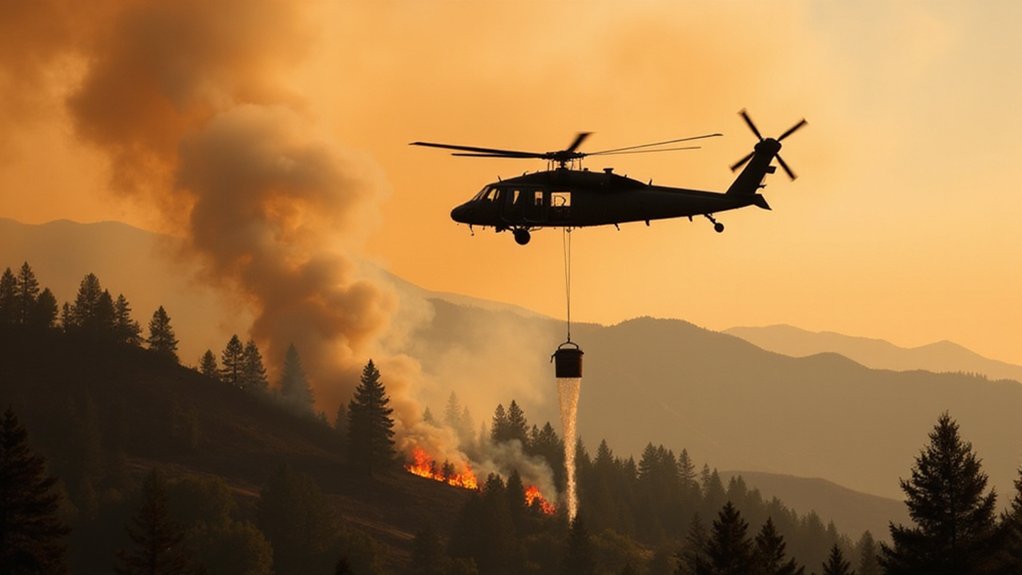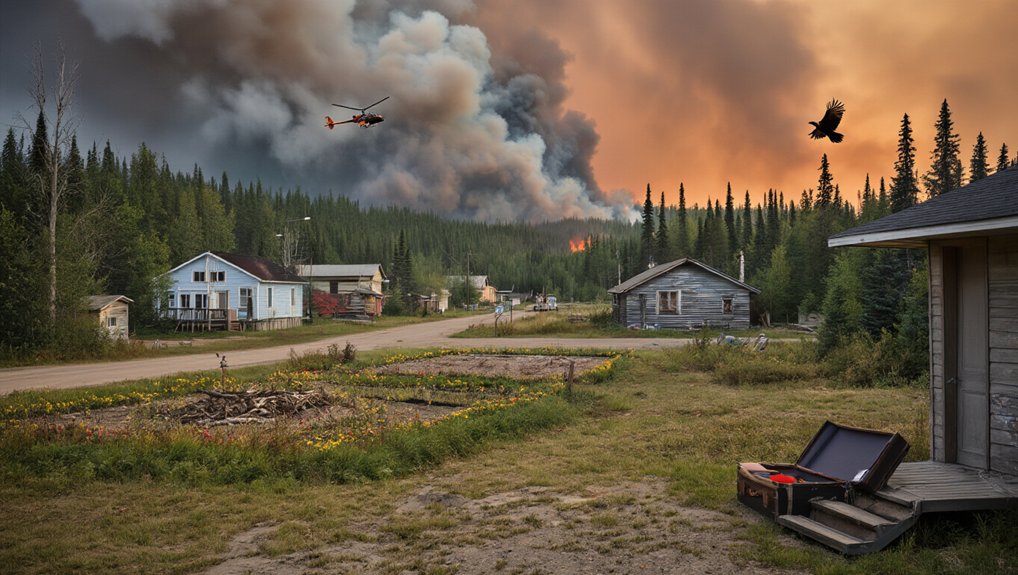Canada’s on fire again. As of May 30, 2025, an eye-watering 1.46 million hectares have burned across the country. That’s three times the 10-year average. Three times. The numbers don’t lie – 200 fires are actively burning, with 79 classified as uncontrolled. Mother Nature apparently didn’t get the memo about taking it easy this year.
Saskatchewan and Manitoba are getting absolutely hammered. Each province has lost over half a million hectares to flames. Alberta’s burning through 224,183 hectares, while British Columbia has watched 144,224 hectares go up in smoke – nearly double its typical damage. Even Ontario, not usually a wildfire hotspot, has seen four times its normal burn area. These wildfires contribute to a dangerous feedback loop as they release greenhouse gases that further accelerate polar ice melt.
The human cost? Real and immediate. Over 900 members of the Wabaseemong community can’t go home. Bird River residents remain evacuated, along with workers at the Tanco Mine. Bissett got slapped with a mandatory evacuation order on May 30. The Ontario-Manitoba Fire near Ingolf keeps growing – 31,300 hectares in Ontario, another 3,700 in Manitoba. Nobody’s controlling that beast yet. Across the nation, 25,000 people have been forced from their homes as the fires rage on.
NASA’s satellites are working overtime, detecting fire hot spots twice daily. The data’s grim. Four times the normal hot spots for early June. Each detection covers about 26 football fields worth of burning forest. This is the worst early-season fire activity since satellite tracking began in 2012, except for 2023’s nightmare season.
The smoke? It’s everywhere. Canadian wildfire smoke has blanketed North America and somehow made it all the way to Europe. The Copernicus monitoring folks must be having a field day tracking this mess. Air quality indices are through the roof. The coordinated response involves agencies mobilizing resources across provinces, with peak aircraft deployment reaching 1,125.
Fire season typically runs April through October, but 2025 decided to start early and go hard. With 1,576 fires already logged, Canada’s slightly above the 10-year average for fire count. But area burned? That 309% of normal figure tells the real story. If this keeps up, 2025 might give 2023’s record-breaking destruction a run for its money. The boreal forests aren’t supposed to burn like this. Yet here we are.
References
- https://earthsky.org/earth/canadian-wildfire-smoke-north-america-june-2025/
- https://cwfis.cfs.nrcan.gc.ca/report/graphs
- https://cwfis.cfs.nrcan.gc.ca/report
- https://abcnews.go.com/Health/wireStory/data-capturing-hot-spots-burned-acres-show-canada-122513388
- https://atmosphere.copernicus.eu/cams-tracks-smoke-intense-canadian-wildfires-reaching-europe









